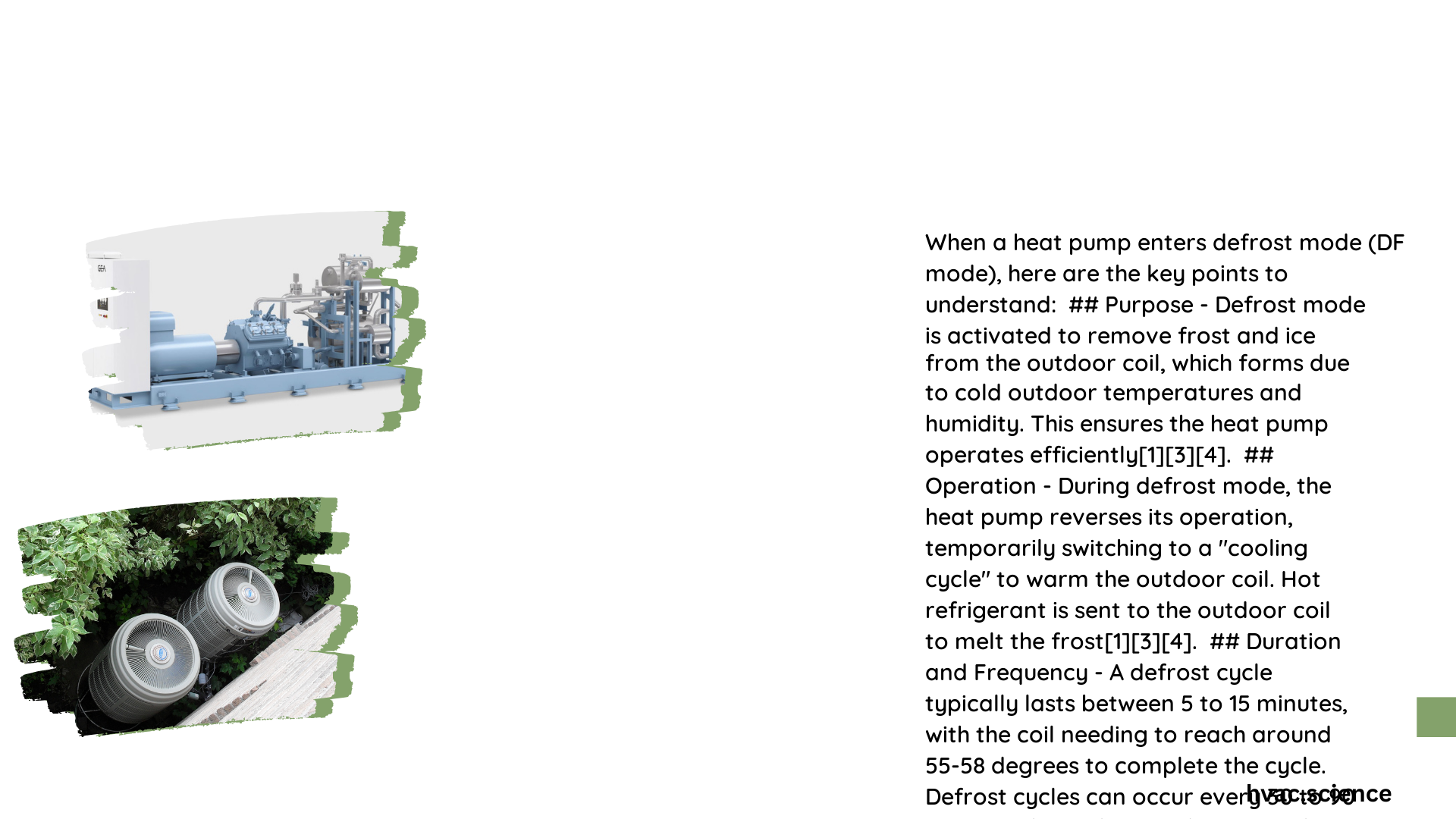Heat pump defrost mode (DF mode) is a critical operational mechanism that prevents ice accumulation on outdoor units during cold temperatures, ensuring optimal system performance and preventing potential mechanical damage. This specialized function automatically activates when external conditions trigger frost formation, temporarily reversing refrigerant flow to melt accumulated ice and maintain heat transfer efficiency.
What Exactly is DF Mode in Heat Pumps?
Core Mechanism of Defrost Cycle
DF mode represents a specialized thermal management strategy where heat pumps temporarily interrupt normal heating operations to prevent frost buildup. During this process, the system:
- Switches refrigerant flow direction
- Activates electric resistance heating
- Stops outdoor fan operation
- Melts accumulated ice on heat exchanger
Why Does Frost Formation Occur?
Frost develops when:
– Outdoor temperatures drop below 40°F
– Humidity levels are high
– Insufficient air circulation exists around outdoor unit
How Does DF Mode Operate?

Defrost Cycle Triggers
| Trigger Condition | Activation Mechanism | Duration |
|---|---|---|
| Temperature < 35°F | Automatic sensor detection | 5-10 minutes |
| Frost thickness > 1/4 inch | Pressure differential sensing | Varies |
| Reduced heat transfer efficiency | Algorithmic evaluation | Adaptive |
Performance Metrics During Defrost
Key performance indicators include:
– Coefficient of Performance (COP): Typically reduces by 30-40% during defrost cycle
– Energy Consumption: Increases momentarily
– Heat Output: Temporarily suspended
What Are Common DF Mode Challenges?
Potential Operational Issues
- Excessive Defrost Cycles
- Indicates potential system malfunction
-
May result from:
- Incorrect sensor calibration
- Refrigerant charge problems
- External environmental factors
-
Inefficient Defrosting
- Symptoms include:
- Prolonged ice accumulation
- Reduced heating efficiency
- Increased energy consumption
How to Optimize DF Mode Performance?
Maintenance Strategies
- Regular outdoor unit cleaning
- Ensure proper drainage around unit
- Check refrigerant levels annually
- Inspect defrost sensors and timers
- Maintain consistent airflow around external components
Recommended Troubleshooting Steps
- Verify sensor functionality
- Check electrical connections
- Assess refrigerant charge
- Clean heat exchanger coils
- Evaluate external unit positioning
Advanced Diagnostic Techniques
Technical Assessment Methods
- Use multimeter for electrical diagnostics
- Employ thermal imaging for precise temperature mapping
- Leverage manufacturer-specific diagnostic tools
- Conduct periodic system performance evaluations
Energy Efficiency Considerations
Efficiency Impact
- Proper DF mode management can reduce energy consumption by 15-25%
- Modern heat pumps feature adaptive defrost algorithms
- Smart systems minimize unnecessary defrost cycles
Professional Recommendations
Expert Insights
- Schedule professional maintenance biannually
- Use high-efficiency heat pump models
- Consider geographic-specific system configurations
- Implement smart home integration for enhanced monitoring
Conclusion
Understanding and managing DF mode is crucial for maintaining heat pump efficiency, preventing mechanical failures, and ensuring consistent thermal comfort.
